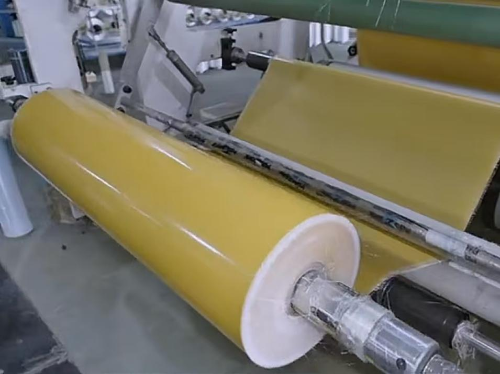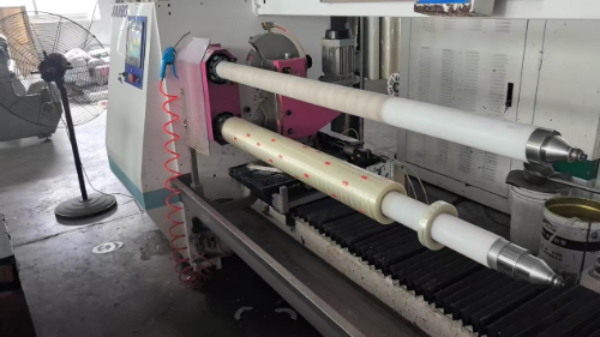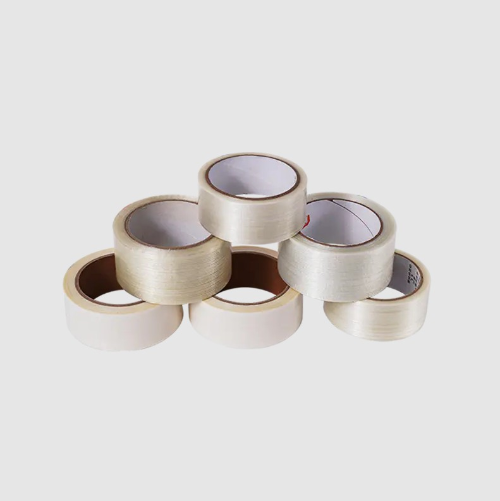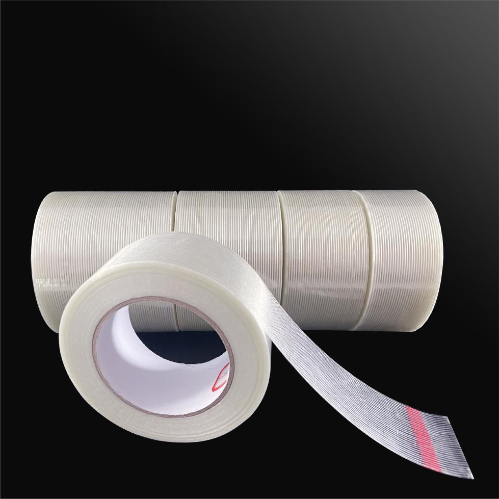High-strength unidirectional fiberglass reinforcing tape is a composite material tape crafted with fiberglass as the core substrate through specialized processing techniques. Its structural hallmark lies in the neat arrangement of fiberglass in a single direction, a unidirectional arrangement that endows the tape with extraordinary tensile strength along the fiber orientation while retaining a certain degree of flexibility in other directions. The surface of the substrate is typically coated with a layer of resin, which not only serves to secure the fibers but also enhances the tape’s adhesion to the object being bonded, while improving overall corrosion resistance and wear resistance. Compared to ordinary fiberglass tapes, it boasts a higher fiber density and tighter arrangement, and the specially treated fiberglass itself possesses greater strength, enabling it to perform stably in scenarios involving substantial tensile forces. It stands as a commonly used functional material in industrial reinforcement and repair fields.

The performance advantages of high-strength unidirectional fiberglass reinforcing tape are closely linked to its unique structure. Firstly, it exhibits exceptional tensile strength; along the direction of fiber alignment,it can withstand far greater pulling force than ordinary tapes, even comparable to some thin metal sheets. This trait allows it to effectively disperse external forces on the reinforced object, preventing structural damage due to excessive local stress. Secondly, it features excellent chemical stability; the fiberglass itself is resistant to acid and alkali corrosion, and the surface resin coating can also resist erosion from various chemical substances, making it suitable for long-term use in scenarios such as chemical pipelines and storage tanks that are prone to contact with corrosive media.

Furthermore, it boasts remarkable dimensional stability. In environments with significant temperature fluctuations, it does not exhibit obvious thermal expansion or contraction like ordinary tapes, maintaining a tight bond with the bonded object at all times and avoiding a decline in reinforcement effectiveness due to dimensional changes. Meanwhile, it is lightweight and thin, and its application does not significantly increase the weight or volume of the reinforced object, making it particularly suitable for occasions with strict restrictions on equipment weight. Notably, it also possesses a certain degree of impact resistance; when the bonded object is subjected to external impact, the tape can absorb part of the impact force through its own toughness, reducing damage to the object’s structure.

In the field of industrial pipeline maintenance, high-strength unidirectional fiberglass reinforcing tape is widely applied. When metal or plastic pipelines develop minor cracks or become thin due to corrosion, wrapping the tape along the axial direction of the pipeline with the fiber direction aligned with the pipeline’s stress direction can effectively enhance the pipeline’s pressure resistance, prevent cracks from expanding further, and extend the pipeline’s service life. Compared to the traditional method of replacing pipelines, this repair approach is more efficient and cost-effective. It also plays a role in the local reinforcement of containers such as storage tanks and reaction kettles; by adhering to weak areas of the container wall, it strengthens the structural strength of that region, preventing deformation due to excessive internal pressure.
In construction engineering, it is often used for the reinforcement of concrete structures. For example, on the surfaces of beams and columns in old buildings, adhering the tape along the stress direction can enhance the components’ bending and shear resistance. When used with special resins, it can also form an integrated stress structure with concrete, improving the building’s seismic performance. In the maintenance of large infrastructure such as bridges and tunnels, for structural surfaces with fine cracks, using this tape for sealing and reinforcement can prevent water and debris from entering the cracks and exacerbating damage, while dispersing the loads borne by the structure.
Additionally, in fields such as aerospace and automobile manufacturing, where strict requirements are imposed on material strength and weight, it is used for lightweight reinforcement of components. For instance, adhering it to local weak areas of aircraft shells can enhance structural strength without adding excessive weight, meeting the equipment’s design standards.
Before using high-strength unidirectional fiberglass reinforcing tape, the surface to be bonded must be thoroughly treated. Firstly, dust, oil, rust, and other impurities on the surface should be removed; sandpaper can be used to gently polish the surface to increase roughness and improve adhesion. For damp surfaces, they should be dried with a dry cloth or through baking to ensure the surface is dry and free of moisture, otherwise, the bonding effect between the tape and the object will be affected. If there are deep cracks on the surface of the bonded object, special filling materials should be used to fill them first, and then the tape can be applied.
During application, the fiber direction of the tape must be determined based on the stress direction of the reinforced object, ensuring that the fiber direction is consistent with the main stress direction to fully utilize its tensile strength. In the pasting process, the tape should be laid smoothly on the surface, and a scraper or roller should be used to press firmly from the center of the tape to the surroundings, expelling air between the tape and the surface to ensure there are no bubbles or wrinkles, and that the tape is tightly bonded to the object’s surface. If multiple layers need to be pasted, each layer should be treated in the same way, and the fiber directions of adjacent layers can be arranged crosswise as needed to enhance reinforcement effectiveness in different directions. After pasting, it is necessary to wait for the resin coating to cure for a certain period according to the tape type; during curing, the reinforced object should not be subjected to stress or contact with water or chemicals to ensure a stable bond between the tape and the object.

When storing high-strength unidirectional fiberglass reinforcing tape, it is essential to maintain a dry and well-ventilated environment, avoid direct sunlight and high temperatures. The ideal storage temperature is 10-25℃, with a relative humidity not exceeding 60%; otherwise, the surface resin coating may cure prematurely or become damp and deteriorate. The tape should be placed in rolls on flat shelves, avoiding extrusion and folding to prevent fiber arrangement deformation that affects strength.At the same time, it should be kept away from corrosive substances such as acids and alkalis, as well as fire sources,to prevent damage to material properties.
For unused tape after opening, it should be tightly wrapped with a sealed bag or plastic wrap to prevent air from entering and causing oxidation and hardening of the resin coating, which would affect future use. After wrapping, it should be used as soon as possible to avoid long-term storage. In terms of maintenance, when the tape is used in outdoor or humid environments, its surface condition should be checked regularly. If the coating is found to be damaged or peeling, the damaged area should be promptly cleaned and new tape applied to prevent moisture infiltration from affecting the reinforcement effect. For long-term used tape, if the reinforced object shows abnormal deformation, it is necessary to check whether the tape is overstretched or broken; if necessary, replace the tape and re-reinforce to ensure the safety of the overall structure.